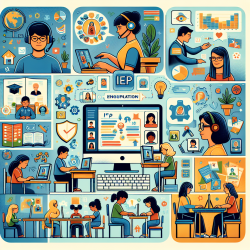Introduction: Rethinking Language Proficiency in Bilingual Kindergarteners
In the field of speech-language pathology, understanding the language proficiency of bilingual children is crucial for fostering their academic success. Recent research by Peets and Bialystok (2015) challenges the traditional reliance on standardized tests to assess language proficiency in bilingual kindergarteners. Their study reveals that bilingual children often perform poorly on standardized tests compared to their monolingual peers, yet demonstrate comparable proficiency in conversational contexts. This finding underscores the need for practitioners to adopt a more holistic approach to language assessment and intervention.
The Limitations of Standardized Tests
Standardized tests are commonly used to measure language proficiency, but they often fail to capture the full linguistic capabilities of bilingual children. These tests are highly decontextualized, focusing on isolated linguistic forms rather than actual language use in natural settings. This approach can misrepresent the abilities of bilingual children, leading to potential misidentification of language disorders.
Conversational Measures: A More Accurate Reflection
The study by Peets and Bialystok (2015) highlights the importance of conversational measures in assessing language proficiency. Bilingual children performed similarly to monolinguals in discourse-based linguistic and genre features, such as narratives and explanations. These findings suggest that conversational contexts provide a more accurate reflection of bilingual children's language abilities, emphasizing the need for practitioners to incorporate discourse analysis into their assessment practices.
Implications for Practitioners
For speech-language pathologists and educators, these findings offer valuable insights into improving educational outcomes for bilingual children. By focusing on conversational measures and incorporating discourse analysis into assessments, practitioners can gain a more comprehensive understanding of a child's language proficiency. This approach not only helps in identifying true language impairments but also supports the development of targeted interventions that enhance bilingual children's academic success.
Encouraging Further Research
While this study provides a significant step forward, further research is needed to explore the long-term implications of conversational measures on academic achievement. Practitioners are encouraged to engage in research that examines the relationship between language proficiency and academic success, particularly in diverse bilingual populations. Such research will contribute to the development of more effective assessment tools and intervention strategies.
Conclusion
As practitioners dedicated to creating great outcomes for children, it is essential to embrace data-driven decisions and use facts to guide our practices. The research by Peets and Bialystok (2015) provides a compelling case for re-evaluating how we assess language proficiency in bilingual children. By shifting our focus from standardized tests to conversational measures, we can better support the linguistic and academic development of bilingual kindergarteners.
To read the original research paper, please follow this link: Academic discourse: Dissociating standardized and conversational measures of language proficiency in bilingual kindergarteners.










